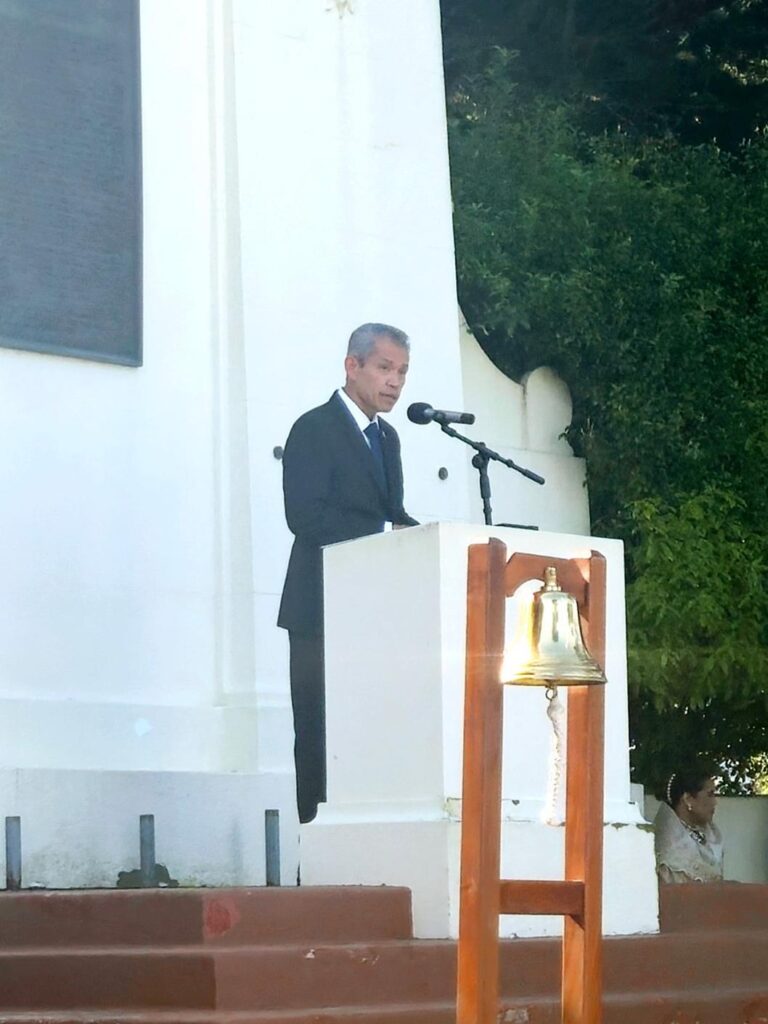SAN FRANCISCO – Against the backdrop of the Golden Gate Strait and its world-famous bridge, the US veteran and Filipino American communities marked the 83rd anniversary of the Fall of Bataan and the Bataan Death March during World War II, in a moving ceremony organized by the Bataan Legacy Historical Society at the San Francisco National Cemetery last April 5.
For the first time, Philippine Consul General Neil Ferrer was joined by his San Francisco Consular Corps colleagues: Mexican Consul General Ana Luisa Vallejo Barba, in recognition of the participation of the Mexican Air Force’s “Aguilas Aztecas” squadron during the liberation of the Philippines in the Second World War; and Korean Consul General Lim Jung Taek, as the event also remembered Korean War veterans.
In his remarks, Consul General Ferrer paid tribute to the Filipino and American veterans of World War II as well as the Korean War, where the Philippines sent more than 7,400 troops as part of the Philippine Expeditionary Forces to Korea (PEFTOK).

“Today’s event serves as a powerful reminder of the unyielding spirit of Filipino and American war veterans, who fought valiantly and endured unimaginable hardships in defense of our freedom. [They] stood shoulder-to-shoulder against overwhelming odds, and [their] resilience remains etched in our national consciousness,” Consul General Ferrer said.
Consul General Ferrer also highlighted the unbreakable bond between the Philippines and the United States, an enduring legacy of Filipino World War II veterans.
“As conveyed by US Secretary of Defense Pete Hegseth during his visit to the Philippines, the Secretary’s first stop in his first trip to Asia, [U.S. President Donald J. Trump] reiterated America’s ironclad commitment to the Philippines under the Mutual Defense Treaty and recognizes the Philippines’s importance as a key ally in the Indo-Pacific Region,” Consul General Ferrer said.
“The Philippines and the United States have remained steadfast in our shared commitment to uphold democratic values, promote peace, and address common challenges such as terrorism, regional security, and freedom of navigation in the South China Sea,” the Philippine Consul General added.
Vice Admiral Andrew Tiongson, the Filipino American Commander for the Pacific Area and Defense Force West of the US Coast Guard, keynoted the commemoration, where he cited the strategic ties between the Philippine and U.S. Coast Guards.
A US Congressional Gold Medal awarding ceremony for eight Filipino World War II veterans, represented by their descendants, also took place during the commemorative event. The San Francisco event marked the 118th awarding ceremony held in the US, since America’s highest civilian award was first conferred on Filipino veterans at the US Capitol’s Emancipation Hall in 2017.
Following the “tolling of the bells,” Consul General Ferrer, Mexican Consul General Vallejo Barba, and Korean Consul General Lim led a wreath-laying ceremony in remembrance of the Fall of Bataan and Bataan Death March.
In her closing remarks, Bataan Legacy Historical Society Executive Director Cecilia Gaerlan exhorted the audience to continue following the example of Filipino war veterans, who lived with dignity and respect for others, and preserving their history and memory for future generations.
Two aerial flybys by the Memorial Squadron and the San Francisco Sheriff Plane Squadron, flying past the Golden Gate and the San Francisco National Cemetery, capped the event.
A full video recording of the Fall of Bataan anniversary event is currently available on the Bataan Legacy Historical Society’s Facebook page.
On April 9, 1942, officials in command of Philippine and American forces in Bataan Peninsula surrendered to the Japanese Imperial Army after three months of brave resistance to the foreign invaders.
Close to 80,000 Filipino and American fighters then walked mostly on foot along a 70-mile route, from Mariveles, Bataan to Camp O’Donnell, Tarlac, in what is now known as the Bataan Death March. Almost 20,000 died due to starvation, disease, abuse, and summary killings. Many consider the Bataan Death March as one of the worst atrocities committed on the Pacific front of the Second World War.





































